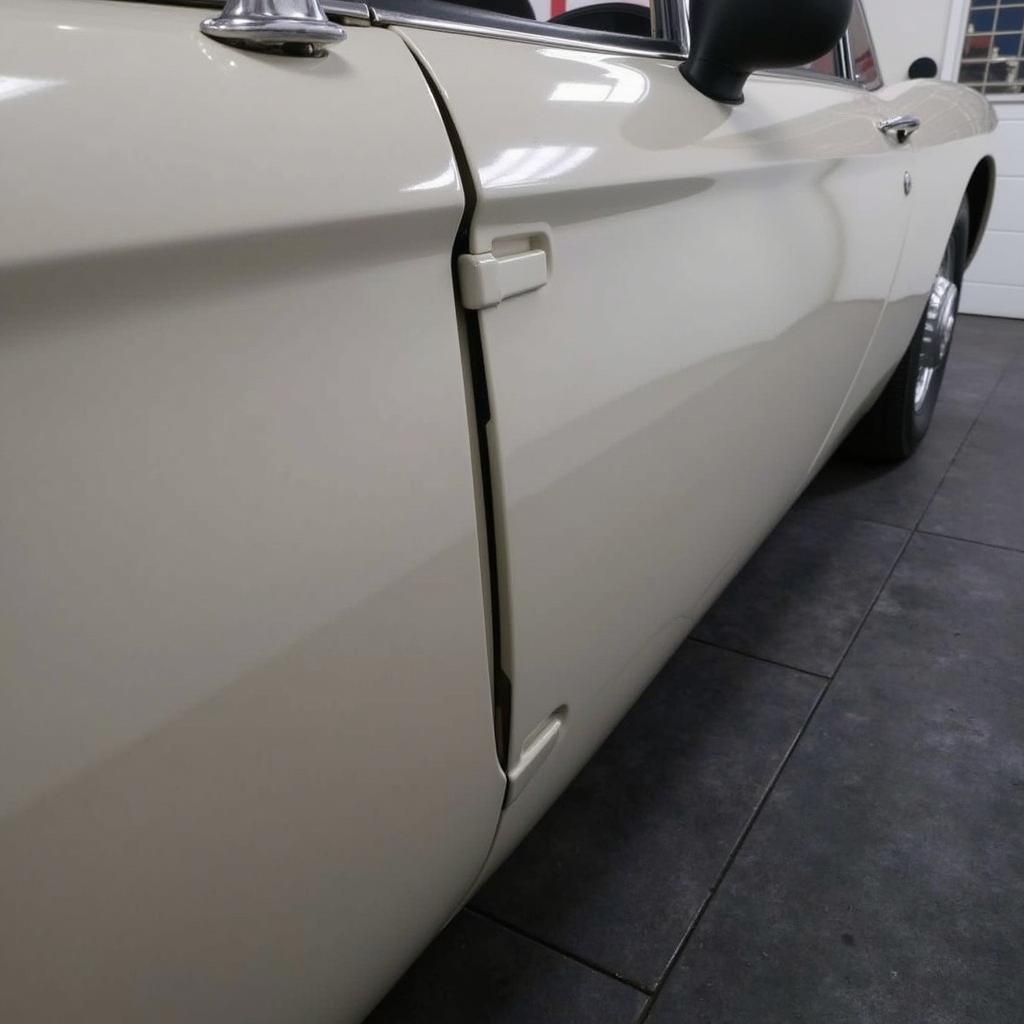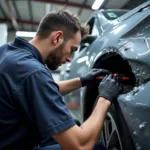Learning how to repair the paint on a car can save you significant money and maintain your vehicle’s appearance. Whether you’re dealing with minor scratches, unsightly chips, or more extensive damage, understanding the right techniques and materials can make a world of difference. This guide will provide a comprehensive overview of DIY car paint repair, covering everything from assessing the damage to achieving a professional-looking finish.
After a thorough wash and dry, carefully assess the damage to your car’s paint. This will determine the appropriate repair method, whether it’s a simple touch-up, wet sanding, or more involved procedures. Identifying the type and extent of the damage is crucial for effective paint repair. Remember, properly identifying the damage is the first step to a successful repair. Check out our guide on the cheapest car paint repair options for budget-friendly solutions.
Understanding Different Types of Car Paint Damage
Car paint damage comes in various forms, from minor scratches to deep gouges. Scratches are typically superficial and may only affect the clear coat. Chips, on the other hand, penetrate deeper, exposing the base coat or even the primer. More severe damage might involve dents and significant paint loss, requiring more complex repair methods. Knowing the difference between a scratch and a chip is vital for selecting the correct repair approach. If you’re unsure about the extent of the damage, consulting a professional is always recommended. For those seeking professional assistance, finding a car dent and paint repair service near you is a good starting point.
Gathering Your Car Paint Repair Supplies
Before you begin, gather the necessary supplies. This typically includes sandpaper (various grits), primer, car paint (matched to your car’s color), clear coat, rubbing compound, polishing compound, masking tape, and microfiber cloths. High-quality materials ensure a better and more durable finish. Don’t compromise on quality; it will impact the final result. Thinking of tackling the repair at home? See what Home Depot offers for car paint repair supplies.
Step-by-Step Guide to Repairing Car Paint
-
Clean the Damaged Area: Thoroughly clean the damaged area with soap and water, then degrease it with a specialized cleaning solution. This removes dirt and grime that can interfere with the repair process.
-
Sand the Damaged Area: Use sandpaper to smooth out the damaged area. Start with a coarser grit and gradually move to a finer grit. This creates a smooth surface for the new paint to adhere to. For deeper scratches and chips, you might need to apply primer after sanding.
-
Apply Primer (If Necessary): If the damage reaches the primer or metal, apply a thin, even coat of automotive primer. Allow it to dry completely before proceeding.
-
Apply the Car Paint: Using a spray gun, airbrush, or even a touch-up pen, apply thin, even coats of car paint to the damaged area. Allow each coat to dry before applying the next. Several thin coats are better than one thick coat, which can lead to runs and drips. Want to know if Sherman Williams paint can work for car chip repair? Check out our article for details.
-
Apply Clear Coat: Once the color coat is dry, apply a few coats of clear coat to protect the paint and give it a glossy finish.
-
Wet Sand and Polish: After the clear coat has cured, wet sand the repaired area with very fine grit sandpaper to remove any imperfections. Follow up with rubbing compound and polishing compound to achieve a smooth, glossy finish.
Maintaining Your Car’s Paint After Repair
Regular washing and waxing can significantly extend the life of your car’s paint job, even after a repair. Keeping your car clean and protected from the elements is key to maintaining its appearance. Proper maintenance will prevent future damage and keep your car looking its best. Wondering how much it costs to repair car paint? Find out more in our dedicated article.
 Polished Car Paint After Repair
Polished Car Paint After Repair
Conclusion
Repairing the paint on your car can seem daunting, but by following these steps and using the right techniques, you can achieve professional-looking results. Remember, patience and attention to detail are crucial for a successful car paint repair. So, take your time, follow the instructions, and enjoy the satisfaction of restoring your car’s appearance. Learn more about how much it costs to repair car paint to help you budget effectively.
FAQ
- What is the best way to match my car’s paint color?
- Can I repair rust spots using the same process?
- How long does it take for car paint to dry completely?
- What type of sandpaper should I use for wet sanding?
- How often should I wax my car after a paint repair?
- What is the difference between rubbing compound and polishing compound?
- How do I fix deep scratches on my car’s paint?
Common Car Paint Repair Scenarios
- Minor Scratches: Often only affecting the clear coat, these can be addressed with rubbing compound and polishing compound.
- Stone Chips: These require touch-up paint and potentially clear coat for a seamless repair.
- Deep Scratches and Gouges: These often require sanding, priming, and multiple coats of paint and clear coat.
Further Questions and Resources
If you have any other questions about how to repair car paint or related topics, please explore the other articles available on our website.
Need help? Contact us via WhatsApp: +1(641)206-8880 or Email: [email protected]. Our customer service team is available 24/7.


